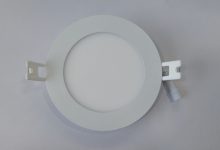Exploring the Benefits of Steel Frame Agricultural Buildings in UK Farming

As the backbone of UK farming continues to evolve, more and more farmers are turning to steel frame agricultural buildings for their durability, versatility, and cost-effectiveness. From housing livestock to storing machinery, these structures offer a multitude of benefits that can significantly enhance efficiency and productivity on the farm. Join us as we delve into the world of steel frame agricultural buildings and explore how they are revolutionising farming practices in the UK.
Introduction to Steel Frame Agricultural Buildings
Steel frame agricultural buildings have become increasingly popular in UK farming due to their numerous benefits. The agriculture industry is constantly evolving and improving, and steel frame buildings offer a modern solution for farmers looking to enhance their operations.
A steel frame agricultural building is a structure made entirely of steel components that are supported by pillars and beams. These buildings can be customised according to the farmer’s specific needs and are suitable for various purposes such as storage, livestock housing, workshops, machinery sheds, and more.
Traditionally, wooden and brick structures were used for agricultural buildings. However, in recent years, steel has emerged as the preferred material due to its durability, versatility, and cost-effectiveness.
Advantages of Using Steel Frame for Agricultural Buildings
The use of steel frames in agricultural buildings has gained popularity in recent years due to its numerous benefits. Below, we will delve deeper into the advantages of using steel frame for agricultural buildings.
- Durability and Strength: One of the main advantages of using steel frames in agricultural buildings is their durability and strength. Steel is a highly robust material that can withstand harsh weather conditions, heavy loads, and constant wear and tear. This makes it ideal for farm structures that need to be strong and long-lasting.
- Cost-effective: Another significant advantage of steel frames is their cost-effectiveness. These frames are relatively inexpensive compared to traditional building materials like wood or brick. Additionally, they require less maintenance over time, resulting in lower operational costs for farmers.
- Versatility: Steel frames offer great versatility in design as they can be easily customised according to the specific needs of an agricultural building. They come in various shapes and sizes, making it easier to create large open spaces or multi-purpose areas within a single structure.
- Quick Construction: Time is crucial for farmers, especially during harvest season when there is a lot of work to be done on the fields. The quick construction process of steel frame buildings makes them an attractive option for farmers who need structures built quickly without compromising on quality.
5.Protection against Pests and Fire: Traditional wooden structures are prone to damage from pests such as rodents or insects, which can cause significant losses for farmers if left unchecked. On the other hand, steel frames are not vulnerable to these issues, providing protection against potential damages caused by pests or termites.
Additionally, steel frame structures have high fire-resistant properties compared to other building materials like wood or concrete blocks. This means that they are less likely to catch fire and spread quickly, reducing potential risks for both people and livestock living inside the building.
6.Eco-Friendly Option: Steel is a sustainable material that is 100% recyclable, making it an eco-friendly option for agricultural buildings. This not only promotes environmental sustainability but also reduces the carbon footprint of the building process.
The advantages of using steel frame for agricultural buildings are durability, cost-effectiveness, versatility, quick construction, protection against pests and fire, and being an eco-friendly option. These qualities make it a highly desirable material in modern farming practices.
Cost Savings and Durability of Steel Frame Buildings
We’ve touched on it already, but it’s worth exploring further for the fact that in recent years, steel frame buildings have gained significant traction in the agricultural industry, particularly in the UK. One of the main reasons for this is their cost savings and durability compared to traditional building materials such as wood or brick.
The initial cost of constructing a steel frame building may seem higher than other options, but it ultimately provides long-term cost savings. This is due to the fact that steel is a low maintenance material, requiring minimal repairs and replacements over its lifetime. Additionally, steel structures can be built much quicker than traditional materials, reducing labour costs and minimising downtime for farming operations.
Choosing a steel frame building over traditional materials offers significant advantages in terms of cost savings and durability for UK farmers. Not only does it provide long-term financial benefits, but it also ensures a sturdy and secure structure for agricultural operations. These advantages make steel frame buildings an attractive investment that can benefit UK farming businesses for years to come.
Considerations for Building a Steel Frame Agricultural Building on Your Farm
When considering building a steel frame agricultural building on your farm, there are several important factors that need to be taken into consideration, so it is well worth taking a deep dive into them. The lifespan and durability of the structure will depend greatly on the planning and construction process, making it crucial to carefully think through each aspect before starting the project.
Firstly, it’s important to assess the purpose of the building and its intended use. Steel frame agricultural buildings are versatile and can be used for various purposes such as storage, housing livestock, workshops, or equipment sheds. Knowing exactly what you want to use the building for will help determine its size, layout, and necessary features.
Next, it’s essential to consider your local climate conditions. The UK is known for its unpredictable weather patterns and strong winds throughout the year. This means that proper site preparation must be done before constructing a steel frame agricultural building. Ensuring a solid foundation with proper drainage systems in place will prevent any potential damage from heavy rainfall or flooding.
Another vital aspect is obtaining necessary permits and approvals from local authorities before beginning construction. Different regions may have varying regulations regarding building codes and land use restrictions, so it’s vital to check with your local council beforehand.
It’s also advisable to consult with experienced professionals when designing your steel frame agricultural building. Their expertise can help create an efficient layout that maximises space while keeping costs within budget. Involving them in the early stages can also save time and money by avoiding potential design flaws or structural mistakes.
Additionally, when choosing materials for your steel frame agricultural building, consider using galvanised steel as it offers superior strength and corrosion resistance compared to other materials like wood or concrete. Galvanised steel also requires minimal maintenance over its lifespan which translates into long-term cost savings.
Energy efficiency should always be taken into consideration when constructing any structure on your farm – including steel frame buildings. Investing in insulation during construction helps regulate internal temperatures all year round while reducing energy consumption costs significantly.
Investing in a steel frame agricultural building provides many benefits for UK farms. However, careful planning and consideration of various factors are vital to ensure the building meets your needs and lasts for generations to come. Consulting with experienced professionals, obtaining necessary permits and approvals, selecting the right materials and energy-efficient design all play a crucial role in constructing a durable and practical steel frame agricultural building on your farm.
Is a Steel Frame Agricultural Building Right for You?
After exploring the benefits of steel frame agricultural buildings in UK farming, it can be seen that this type of structure has numerous advantages over traditional wooden or brick buildings. Firstly, steel frame agricultural buildings are highly durable and long-lasting. They have been designed to withstand harsh weather conditions and heavy loads from agricultural machinery. This means that farmers can invest in a steel frame building and not have to worry about frequent repairs or replacements, leading to cost savings in the long run.
Safety is always a top priority on farms where hazardous equipment and chemicals are used daily. Steel frame agricultural buildings offer enhanced safety features such as fire-resistant coatings which reduce risks from potential fires caused by machinery or stored chemicals.
Concluding Thoughts
Ultimately, considering all these benefits – durability, flexibility in design options, cost-effectiveness, sustainability and enhanced safety – it’s safe to conclude that opting for a steel frame agricultural building is the right choice for farmers in UK agriculture. It not only provides a functional and long-lasting structure but also brings cost savings, versatility in design and peace of mind in terms of safety. So whether it’s for storage, livestock housing or equipment cover, a steel frame agricultural building is definitely worth considering as an investment for your farm.








